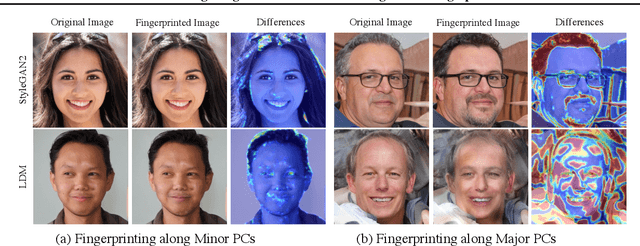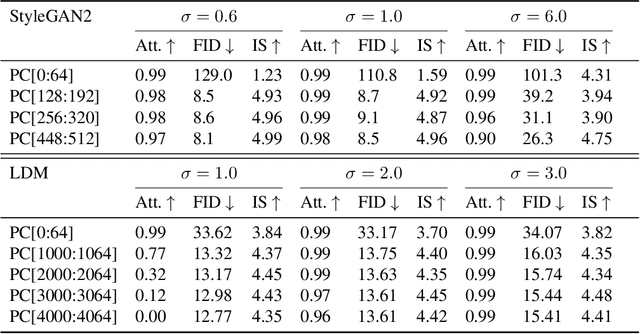Guangyu Nie
Attributing Image Generative Models using Latent Fingerprints
Apr 17, 2023



Abstract:Generative models have enabled the creation of contents that are indistinguishable from those taken from the nature. Open-source development of such models raised concerns about the risks in their misuse for malicious purposes. One potential risk mitigation strategy is to attribute generative models via fingerprinting. Current fingerprinting methods exhibit significant tradeoff between robust attribution accuracy and generation quality, and also lack designing principles to improve this tradeoff. This paper investigates the use of latent semantic dimensions as fingerprints, from where we can analyze the effects of design variables, including the choice of fingerprinting dimensions, strength, and capacity, on the accuracy-quality tradeoff. Compared with previous SOTA, our method requires minimum computation and is more applicable to large-scale models. We use StyleGAN2 and the latent diffusion model to demonstrate the efficacy of our method.
Improving Model Robustness with Transformation-Invariant Attacks
Jan 31, 2019



Abstract:Vulnerability of neural networks under adversarial attacks has raised serious concerns and extensive research. Recent studies suggested that model robustness relies on the use of robust features, i.e., features with strong correlation with labels, and that data dimensionality and distribution affect the learning of robust features. On the other hand, experiments showed that human vision, which is robust against adversarial attacks, is invariant to natural input transformations. Drawing on these findings, this paper investigates whether constraints on transformation invariance, including image cropping, rotation, and zooming, will force image classifiers to learn and use robust features and in turn acquire better robustness. Experiments on MNIST and CIFAR10 show that transformation invariance alone has limited effect. Nonetheless, models adversarially trained on cropping-invariant attacks, in particular, can (1) extract more robust features, (2) have significantly better robustness than the state-of-the-art models from adversarial training, and (3) require less training data.
 Add to Chrome
Add to Chrome Add to Firefox
Add to Firefox Add to Edge
Add to Edge